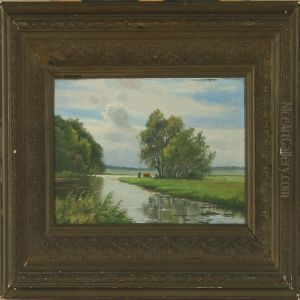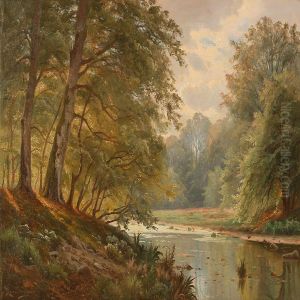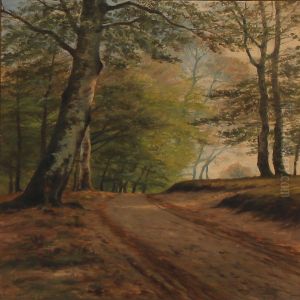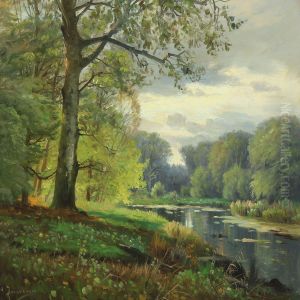Niels Hansen-Jacobsen Paintings
Niels Hansen-Jacobsen was a Danish sculptor and ceramist born on September 10, 1861, in the town of Vejen in Southern Denmark. He is best known for his evocative sculptures which often incorporated elements of mythology, folklore, and a certain haunting expressiveness that became his signature style. Hansen-Jacobsen's work showed a strong influence from the Symbolist movement, a late 19th-century artistic movement that emphasized emotions, ideas, and the metaphysical.
After initially training as a potter, he began his formal education in sculpture at the Royal Danish Academy of Fine Arts in Copenhagen. His studies there were complemented by travels to Paris, which was a major center for artistic innovation at the turn of the century. Hansen-Jacobsen spent a substantial amount of time in Paris, where he was exposed to the burgeoning Symbolist movement and other contemporary artistic currents, absorbing influences that would deeply inform his later work.
In Paris, he also became acquainted with several other artists and intellectuals of the time. This period was crucial for his artistic development. His sculptures from this era reveal a tendency towards a dramatic expression of human emotions and conditions, often encapsulated in figures from fairy tales and legends. One of his most famous works is 'Troll that smells Christian blood,' a sculpture that exemplifies his skill in capturing the eerie and the fantastical.
Returning to Denmark, Hansen-Jacobsen continued to work and eventually settled in his hometown of Vejen. There, he became a central figure in the local arts community, eventually leading to the establishment of the Vejen Art Museum, which to this day houses a significant collection of his work. His contribution to the arts extended beyond his own creations; he was instrumental in fostering a cultural environment in his community and supporting the work of other artists.
Throughout his career, Niels Hansen-Jacobsen remained committed to exploring the depths of human emotion and the mythological underpinnings of cultural narratives. His work is characterized by a unique blend of the traditional and the innovative, often featuring a haunting quality that is both timeless and distinctly rooted in Scandinavian culture.
Niels Hansen-Jacobsen passed away on September 26, 1941. His legacy is preserved in the many sculptures and ceramics that continue to inspire and provoke thought. His influence on Danish sculpture and his role in the Symbolist movement remain significant, and his works are celebrated for their originality and emotional depth.



